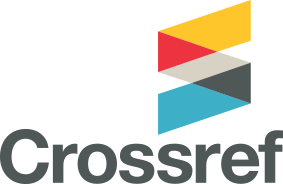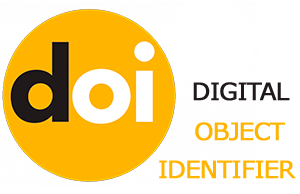ANALYSIS OF IMPLEMENTATION CHALLENGES OF MODERN CLOUD TECHNOLOGIES IN LEARNING MANAGEMENT SYSTEMS
DOI:
https://doi.org/10.32689/maup.it.2025.2.19Keywords:
learning management system, LMS, e-learning, cloud technologies, distance education, deployment optimization, cloud infrastructureAbstract
This article provides a review of the current state of LMS development and the use of cloud technologies in this domain. Global trends in the growth of the LMS market and the adoption of cloud services are analyzed, including the acceleration of digital transformation in education under the influence of the pandemic and wartime conditions. The key advantages of using cloud computing in educational platforms are identified, as well as the problematic aspects and challenges that arise in the implementation of LMS.The aim of study is to summarize modern approaches and solutions in the field of LMS and cloud technologies, and to identify current issues in their implementation and operation, especially in the context of optimal deployment of LMS services in cloud environments.Methodology. The study employs analysis and synthesis of recent scientific publications, statistical data on the educational technology market, and the experience of LMS deployment in Ukraine and globally. A comparative analysis of the capabilities of traditional versus cloud-based LMS solutions was conducted, along with content analysis of research on performance, security, and architecture of these systems.Scientific novelty. The current state of LMS development is clarified with regard to cloud trends; the prevailing challenges are systematized (ranging from the lack of unified methods for evaluating LMS effectiveness to issues of security and optimal resource utilization). The problem of optimal deployment of LMS services in cloud infrastructure is highlighted for the first time as one of the key issues for increasing the efficiency of e-learning. Conclusions. Modern LMS are rapidly expanding in popularity and functionality, integrating cloud services for scalability and accessibility. At the same time, there are drawbacks, including difficulties in selecting and implementing an optimal platform, and ensuring security and performance under increasing loads. The analysis shows that applying mathematical optimization models is a promising approach to solving these issues. Further research will focus on developing an ILP model for optimal deployment of LMS services in a cloud environment as a tool to enhance the efficiency and reliability of electronic learning systems.
References
Бабак О. А., Ісак Л. М. Хмарні технології в освіті. Міжнар. наук. журнал «Грааль науки». 2023. № 27 (травень). С. 485–489.
Дистанційне навчання замість заочного: зміни для якості. Освіта.UA. 2023. URL: https://osvita.ua/vnz/90312/ (дата звернення: 11.11.2023).
Олійник В. В., Грабовський П. П., Коновал О. А. Критерії та показники добору цифрової платформи електронного навчання для закладу загальної середньої освіти. Інформаційні технології і засоби навчання. 2022. № 90 (4). С. 19–31. DOI: 10.33407/itlt.v90i4.5010.
Освіта і наука України в умовах воєнного стану: інформ.-аналіт. збірник / М-во освіти і науки України, Ін-т освітньої аналітики. Київ, 2023. 64 с.
Що таке LMS: типи, можливості та переваги систем управління навчанням. Cases.media. 2023. URL: https:// cases.media/article/sho-take-lms-tipi-mozhlivosti-ta-perevagi-sistem-upravlinnya-navchannyam (дата звернення: 11.06.2025).
Aljad R. R. Analysis of Development Trends and Experience of using LMS in Modern Education. E-Learning Innovations Journal. 2023. Vol. 1, No. 2. P. 86–104. DOI: 10.57125/ELIJ.2023.09.25.05.
Apat H. K., Goswami V., Sahoo B., Barik R. K., Saikia M. J. Fog service placement optimization: a survey of state-of-the-art strategies and techniques. Computers. 2025. Vol. 14(3), № 99. P. 1000–1045. DOI: 10.3390/computers14030099.
Chatterjee P., Bose R., Banerjee S., Roy S. Enhancing Data Security of Cloud Based LMS. Wireless Personal Communications. 2023. Vol. 130, No. 2. P. 1123–1139. DOI: 10.1007/s11277-023-10323-5.
Europe Learning Management Systems Market is projected to grow from USD 10.70 Billion in 2025 to USD 51.99 Billion by 2034, exhibiting a CAGR of 19.20 % during 2025. 2034. Secondary Research, Primary Research, MRFR Database and Analyst Review (Market Research Future, 2024). URL: https://www.marketresearchfuture.com/reports/europe-learning-management-systems-market-21601 (дата звернення: 12.06.2025).
Gamage S. H. P. W., Ayres J. R., Behrend M. B. A systematic review on trends in using Moodle for teaching and learning. International Journal of STEM Education. 2022. Vol. 9, Article 9. DOI: 10.1186/s40594-021-00323-x.
Handoko D., Nur W. Implementation of Microservices Architecture in Learning Management System E-Course Using Web Service Method. SinkrOn: Jurnal dan Penelitian Teknik Informatika. 2022. Vol. 7, No. 1. P. 76–82. DOI: 10.33395/sinkron.v7i1.11229.
Santoyo-González A., Cervelló-Pastor C. Latency-aware cost optimization of the service infrastructure placement in 5G networks. Journal of Network and Computer Applications. 2018. Vol. 114. P. 29–37. DOI: 10.1016/j.jnca.2018.04.009.
Downloads
Published
How to Cite
Issue
Section
License
Copyright (c) 2025 Артем МОІСЕЄНКО, Юлія КУЗНЕЦОВА

This work is licensed under a Creative Commons Attribution 4.0 International License.





